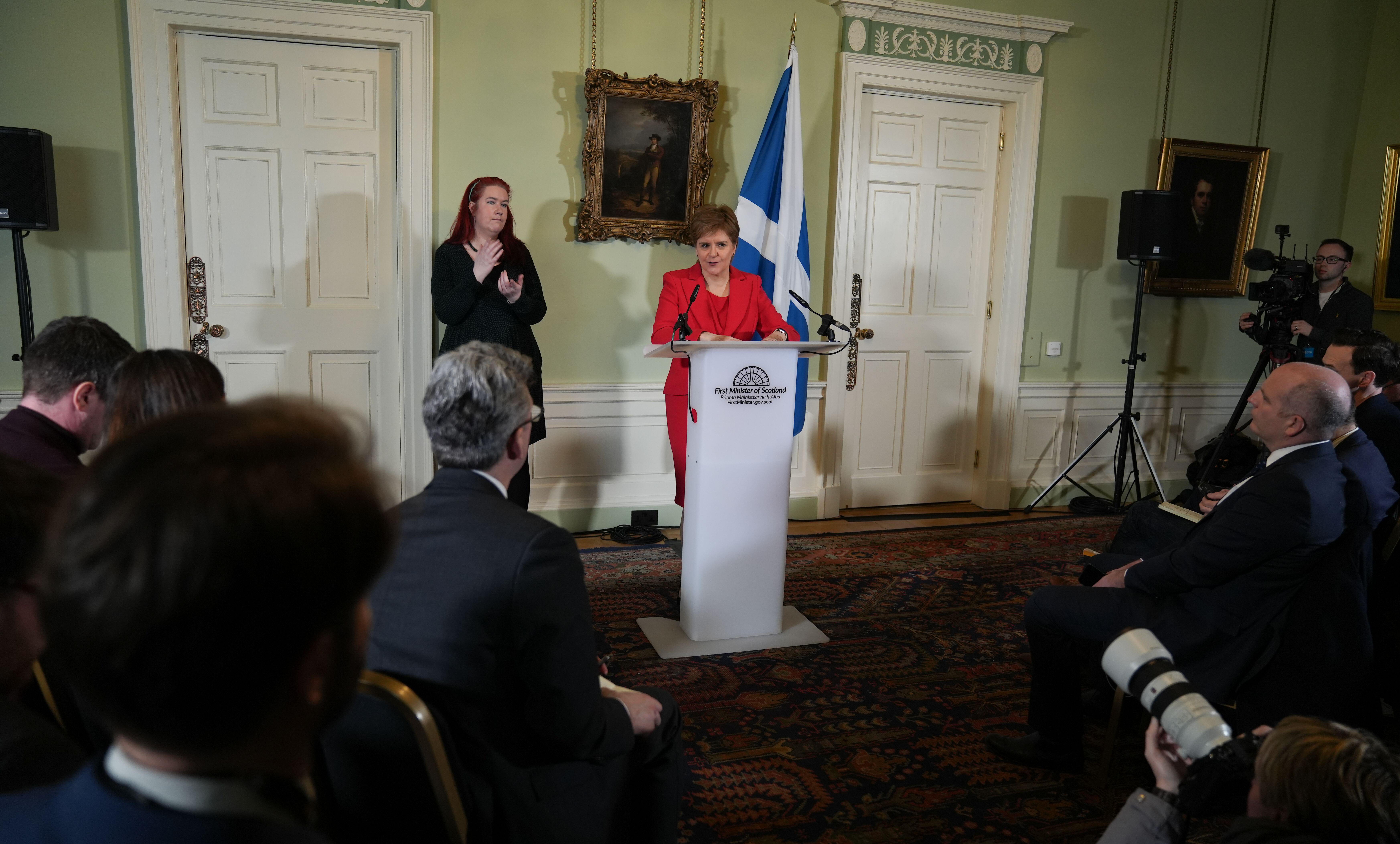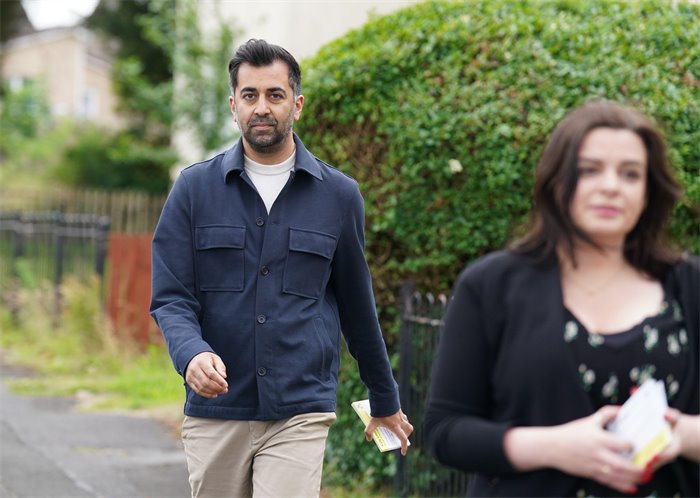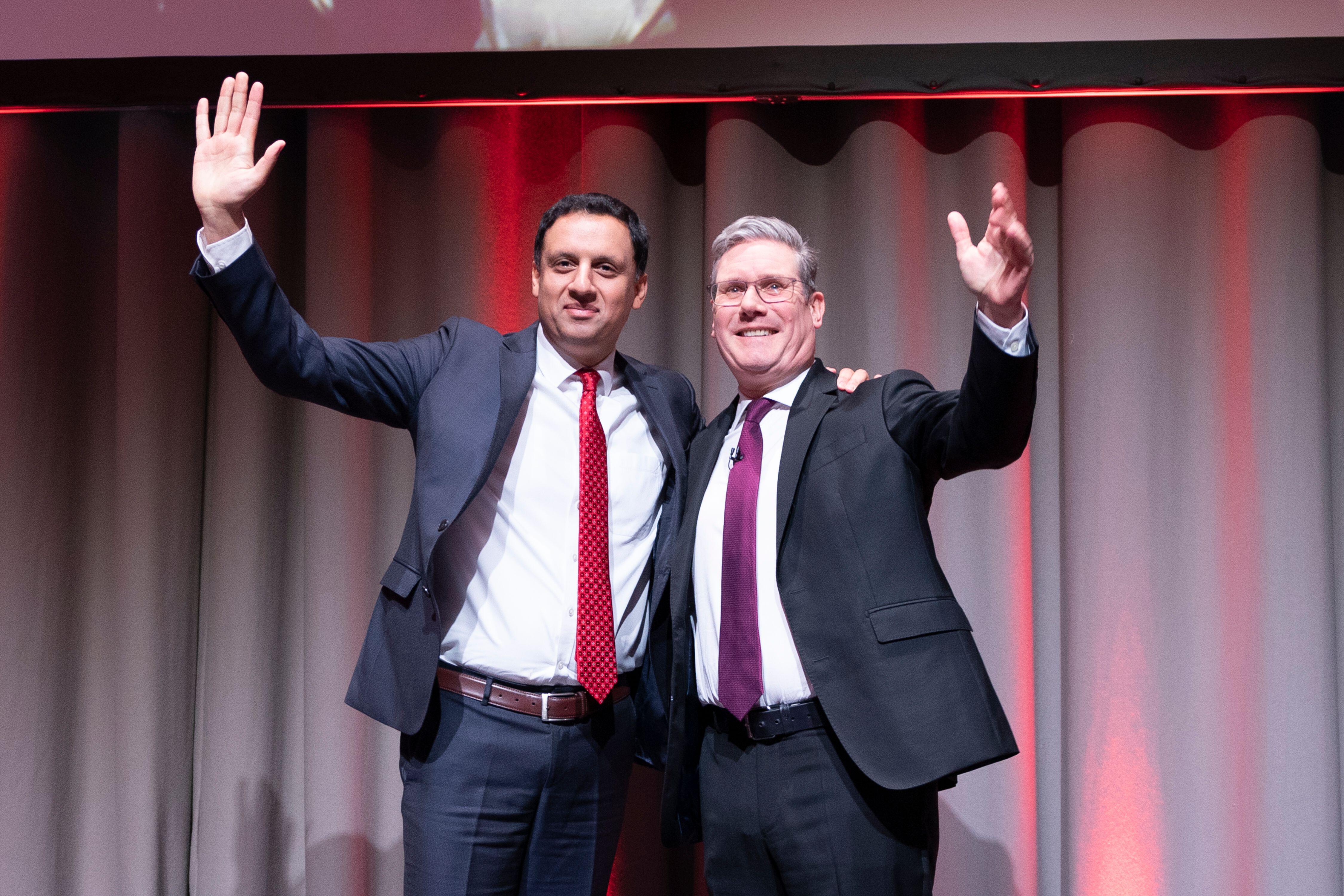SNP disunity has hit them square in the polls
For the SNP, it’s been a tumultuous year.
The shock resignation of Nicola Sturgeon in February sparked a very public conversation on where the party is heading through the guise of an at times fraught leadership contest. While Humza Yousaf eventually won – much to the relief of many of the party’s MSPs and the Greens – he’s never quite managed to get control of the infighting since then.
Add to that mounting woes relating to performance (the NHS, education, the economy) and accusations of wasting taxpayer cash (ferries, a recycling scheme, Prestwick Airport), after 16 years in government the party is looking stretched.
No doubt the now infamous quote from fellow leadership contender (and now backbencher) Kate Forbes about Yousaf’s record in various ministerial posts – “you were a transport minister and the trains were never on time, when you were justice secretary the police were stretched to breaking point, and now as health minister we've got record high waiting times” – will continue to plague him in the year ahead.
And that’s without mentioning the impact of the ongoing police investigation and arrest of Sturgeon (though she was released without charge).
No wonder, then, that all this has started to hit the party where it hurts: the polls.
 Nicola Sturgeon resigned as FM and SNP leader in February | Alamy
Nicola Sturgeon resigned as FM and SNP leader in February | Alamy
Professor John Curtice explains: “At the point when Sturgeon resigned, the SNP was still averaging 43 per cent in the opinion polls – only slightly down on where they were in 2019.
“By the time the leadership contest was over and Yousaf was elected, they were down to 38. The average of the polls in October and November wasn’t much different. They’re talking about 35 per cent.”
While some quarters of the SNP are quick to blame the Operation Branchform for its problems (and hope that come the general election next year, it will be done and dusted), Curtice says this is a “simplistic interpretation”.
“The decline of the SNP support largely predates the revelations about the police investigation into the SNP finances. What the leadership election exposed was internal division within the SNP and now there's been a very substantial change in people’s perceptions of the unity of the SNP,” he says.
There is now doubt about the SNP’s ability to provide a level of unity
Indeed, a Savanta poll in the autumn found 60 per cent of Scottish voters think the party is divided. Even among those who voted for them in 2019, that figure is 43 per cent.
Curtice continues: “The other bit is Humza Yousaf just isn’t anything like as popular as his predecessor. The crucial statistic of 2023 was that despite the fact that Humza Yousaf got the support of virtually every elected SNP parliamentarian who went public about their preference, and therefore SNP members were given a very, very strong cue by their elected parliamentarians, Yousaf only got 52 per cent.
“I would argue that basically the problem the SNP have to solve is not the debate about independence – which is not one that's been lost, no progress has been made – it is that there is now doubt about the SNP’s ability to provide a level of unity.”
And on their record in government, he says it seems the party is no longer being insulated from problems by the constitutional question. In previous years, there has been little link between people’s perception of, for example, the state of the health service and likelihood to vote SNP. In 2023, that has changed.
 Humza Yousaf on the campaign trail with the SNP's Rutherglen candidate Katy Loudon | Alamy
Humza Yousaf on the campaign trail with the SNP's Rutherglen candidate Katy Loudon | Alamy
In Holyrood’s review of the polls last year, Ipsos’s Rachel Ormston said there were “warning signs” for the SNP in terms people’s opinions on performance. At that point it had not yet filtered through to voting intention. Now though?
“The warning signs were there around satisfaction with their performance on the NHS, the economy, cost of living, education. That has come home to roost a bit this year,” Ormston says.
“People are still very unhappy with Scottish Government performance across all of those areas, and those are the top areas that people care about. Those are the areas that people are going to be focusing on come the general election.”
Having said all of that, most polls continue to have the SNP in the lead in Scotland, even if significantly narrowed. One by Redfield & Winton at the end of November bucked that trend, putting Labour ahead by two percentage points for the first time.
The revival of the Labour Party was the story of 2022, not the story of 2023
That’s partly because Scottish Labour has made little progress this year. Curtice says: “The revival of the Labour Party was the story of 2022, not the story of 2023, because by the time we got to the end of last year, beginning of this year, Labour were polling at around 29-30 per cent.
“The revival of the Labour Party in Scotland was everything to do with, initially, Johnson and partygate, Truss and the fiscal event – i.e. the same reasons as across the UK as a whole. Labour are now running on average – excluding the most recent [Redfield & Winton poll] – at 30 to 33 per cent. They've made a bit further progress, but most of the progress was made in 2022.”
In terms of the looming general election, though, that is enough to put the party on a strong footing because they’ve “displaced the Tories as the principal challenger” in Scotland. “When the SNP tripped up, Labour were in a position to profit,” adds Curtice.
But Ormston says there is still “a lot to play for”. Although voters are critical of the SNP’s record, “that doesn't necessarily translate into saying ‘we think Labour would do a better job’.” The good news for them is Anas Sarwar is “relatively popular” compared with other party leaders.
 Anas Sarwar is the only Scottish leader with a net-positive rating | Alamy
Anas Sarwar is the only Scottish leader with a net-positive rating | Alamy
Rishi Sunak was obviously newly in post [at the end of 2022]. He was getting negative ratings as soon as he was in post, but it was minus 21 and now it’s minus 51. He’s got substantially less popular over the course of 2023 in Scotland.
“Even the Green leaders, who got net positive ratings at the end of last year, they're now both minus 12, minus 13.
“And Humza Yousaf’s ratings are nowhere near as high as Sturgeon’s were, they’re about minus 30.
“The only one who’s maintained their rating and is net positive – albeit only just – is Anas Sarwar, on plus three at the end of last year, plus three at the end of this year.”
The Tories might hang on to those seats... because support for the SNP is down
That said, Keir Starmer remains quite unpopular – both at UK level and within Scotland. Ormston continues: “There's a question about whether in the election campaign he's able to present himself in a way that appeals to the public when they're seeing more of him. But, as we know from many election campaigns, there's all sorts of things that can go wrong – he might eat a sandwich wrong and then it all goes to pot.
“Although Labour is a long way ahead in the UK polls, support for their policies or even awareness of their policies, and perceptions of Keir Starmer, are not where you might expect them to be. There is still a danger there that they really need to be aware of and make sure they engage with that the closer we get to an election.”
And the result of that election in Scotland may come down to what Yes-leaning voters decide. In previous polling, there has been a very strong link between independence supporters and the SNP, but that appears to have been broken this year. About half the population continue to back independence, while support for the SNP drops.
Ormston says: “That group of voters are going to determine [the general election in Scotland], whether they can be pulled back into the SNP fold or whether they go to Labour or whether they decided to go with a pro-independence party and peel off to the Greens or Alba. That group of voters will at the forefront of everyone's minds as they're thinking about campaigning.”
Of course, making consecutive elections about the row over the constitution has bolstered the Scottish Conservatives since 2015. But the party were harmed last year by the woes of the wider party and has seen no recovery in 2023.
That does not mean they will lose their six Scottish seats. Curtice explains: “The Tories are defending against the SNP. There are no Tory/Labour battles north of the border… Right now, the Tories might hang on to those seats, subject to the impact of the boundary review, simply because support for the SNP is down at least as much as a support for the Tories.”
So as we head into the new year, the political make-up of Scotland is on a precipice. Depending on the political winds leading up to the general election, the start of 2025 might look very, very different.
Holyrood Newsletters
Holyrood provides comprehensive coverage of Scottish politics, offering award-winning reporting and analysis: Subscribe